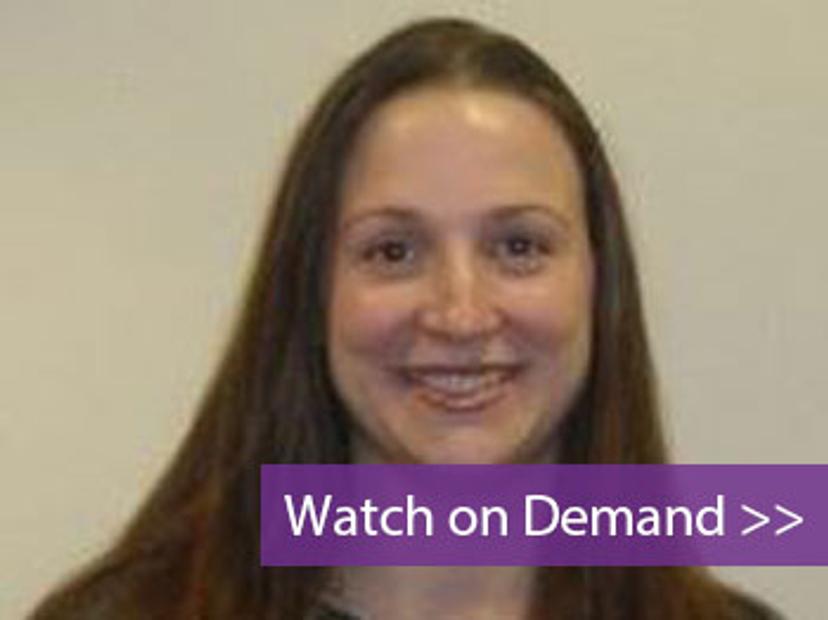The journey to a digitally transformed laboratory
Watch this on-demand webinar to learn about the pragmatic approach to driving digital transformation and embrace technological advancements
8 Mar 2022

Across all scientific industries, organizations are looking at their digital transformation journey and trying to map out the key strategies to achieving a fully digitally enabled laboratory. The key to creating and implementing a digital strategy is determining where efficiencies can be made and where technologies can provide a competitive edge.
Looking at the most recent technological advancements, and those yet to come, organizations need to understand where they are in their digital transformation journey and how they can continue to move forward. Organizations are looking to implement more effective instrument connectivity, advanced software that can streamline processes, and tools and techniques to increase data efficiency.
In this on demand SelectScience® webinar, Trish Meek, Director of Marketing for Digital Science, Thermo Fisher Scientific, will explore how you can choose the right technology, tools, and techniques to drive efficiency and increase productivity amongst your processes and workflows. Whether you are just starting to implement a strategy or are almost a fully digital laboratory, it is important to look at your current data infrastructure and your laboratory needs to develop a realistic strategy. With expertise in integration, data visualization, services and software, Thermo Fisher Scientific can help. This webinar is the fourth of our 10-part webinar series, The Orchestrated Lab, being run in partnership with Thermo Fisher Scientific.
Watch on demandRead on for highlights from the live Q&A session or register to watch the webinar at a time that suits you.
What is the biggest challenge your customers are facing when they think about digital transformation?
TM: I think it's where to start. There’s a quote from the "Harvard Business Review," and it talks about the most important piece being that you're driving change in your organization, you're identifying the problems that exist and how to resolve them. It's a daunting task to look at it holistically. But if you identify key challenges the laboratory is facing and ask what do I need to do with the data, I think those projects are the ones that are most successful.
Could you give us an example of how you've helped a customer with their lab of the future project?
TM: We worked with a laboratory that had over a thousand instruments to connect, a global pharmaceutical company. The key was first asking, how do we bring the data together? I think a lot of people are taking this approach, identifying the key problems and some of the quick wins that can be achieved.
But I think people are also investing in connecting their total infrastructure, because they know that the compound of the future for their business is in the data they already have. Therefore, we need to make that data accessible and available, so that as new AI technology and data analytics capabilities evolve, they can take advantage of them to drive to the next question and the next problem that they're looking at.
How are you helping your customers connect their ecosystem?
TM: At Thermo Fisher we work with the customer and ask what the critical data is. I always say connect everything but within reason. As you look at the instruments and the system that you have in place, what is the most critical data path in your organization? We also look at it from the perspective of how you connect to the scientist's workflow and not just the data on the back end. If you make it easier and more effective for the scientists to do their work, then they're going to embrace that change. If you start to see those benefits surface at the scientist's level, it makes that change management so much easier.
What do you think is the next big opportunity for digital transformation?
TM: It's how we bring data together and how we can leverage open standards to make data more accessible and available, making it easier to eliminate data silos. Thermo Fisher and other vendors are heavily involved in the Pistoia Alliance, Allotrope Foundation, the SiLa 2 standards and the OPC UA standards.
If you look at other industries that have done this well, if you look at healthcare that's driven a more connected ecosystem, if you look at Industry 4.0 initiatives, where they've driven a more connected ecosystem within plant infrastructure, all of those have been because open fingers were adopted, and it became easy to connect the data and connect the workflows. I think that's the greatest opportunity we have in front of us right now.
As labs are working towards digitalization, connecting instruments, processes, and automation, more sophisticated analyses are used. How much focus is on long-term planning in digital transformation?
TM: The important question, organizations I’ve worked with have asked is, how do we build an infrastructure where the lab is orchestrated for the scientists and the data is orchestrated underneath?
The organizations that are thinking about it as a holistic initiative and making the data available are the ones that have the best opportunity moving forward to success in their digitization strategy. Because as I’ve mentioned, the technology is going to continue to change. We're going to continue to see new techniques, new tools available to us. That is exploding right now. Therefore, making data accessible so that you can then pick the right tool to get to the answer that you need for your biggest challenge I think is a critical step.
Learn more about The Orchestrated Lab series and register your place for upcoming webinars.
SelectScience runs 10+ webinars every month, discover more of our upcoming webinars>>

